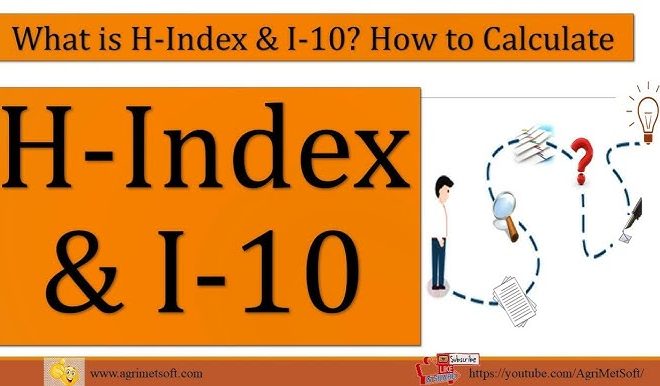How is h index calculated

Introduction
Academic scholars and researchers actively contribute to their fields by publishing articles in various journals. In the academic world, it is crucial to measure the impact of a researcher’s work. One popular metric used for this purpose is the h-index. The h-index was introduced by American physicist Jorge E. Hirsch in 2005 to quantitatively assess the productivity and influence of researchers’ work.
In this article, we will explore how the h-index is calculated, its interpretation, and its limitations.
What is the H-Index?
The h-index is a numerical value that represents both the productivity and citation impact of an individual researcher’s publications. It aims to balance between the number of a researcher’s published papers (quantity) and the number of citations those papers have received from other scientists (quality).
How to Calculate H-Index
The calculation process of the h-index is quite straightforward:
1. Gather all published works (articles, conference papers, book chapters, etc.) by a specific researcher.
2. List these works in descending order based on the number of citations each work has received.
3. Determine the highest rank ‘h’ where ‘h’ number of publications have been cited at least ‘h’ times. This value represents the researcher’s h-index.
For example, let’s consider a researcher who has ten published articles with citation counts as follows: 25, 18, 17, 12, 9, 8, 6, 5, 3, and 1. If we list them in descending order based on citation counts and find that six articles have at least six citations each while the seventh article has five citations, then the h-index of this researcher is six.
Interpretation and Limitations
A higher h-index indicates greater impact as it signifies that more of an author’s publications are highly cited. However, the h-index has several limitations:
1. It is more likely to be skewed for early-career researchers who have only a limited number of publications and citations.
2. The h-index does not consider the total number of citations an author’s work may have.
3. The h-index does not differentiate between shared or solo authorship.
4. It does not account for variations in citation patterns across different fields and disciplines.
Conclusion
The h-index offers a useful measure for evaluating the productivity and impact of a researcher’s work, but it should be approached with caution due to its limitations. To better assess a researcher’s contribution to their field, it is vital to use a combination of various metrics and consider the context of each individual case.






